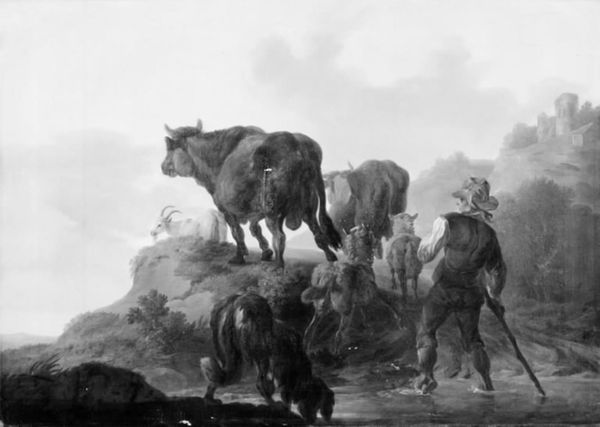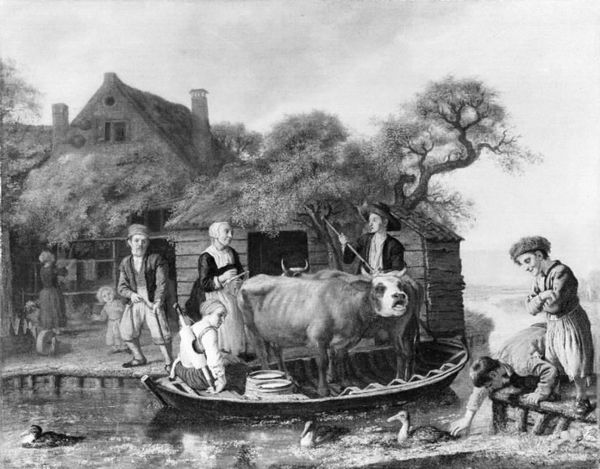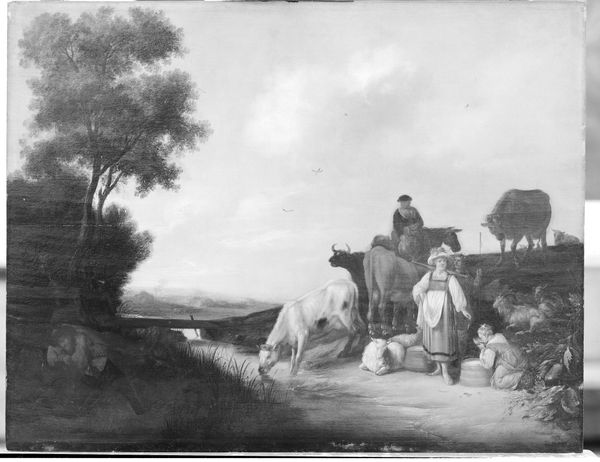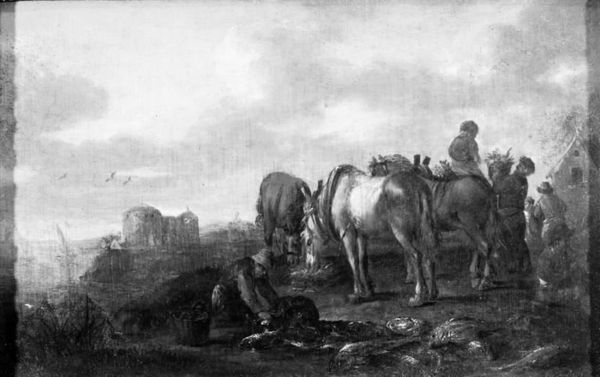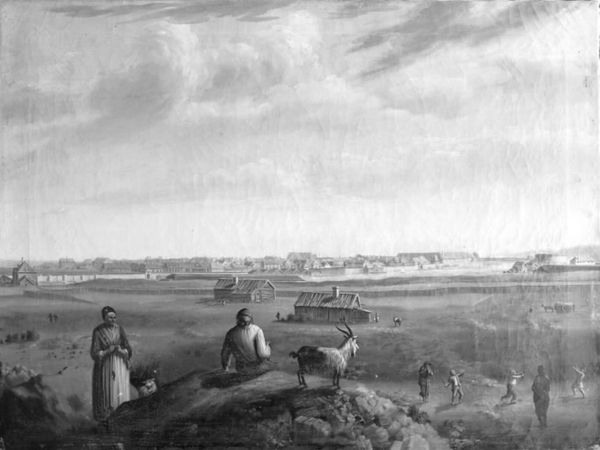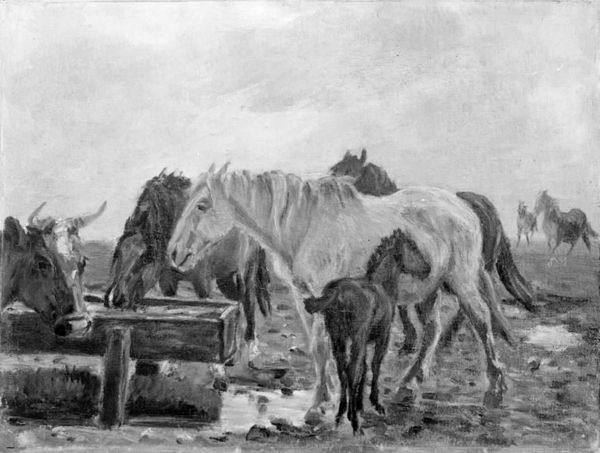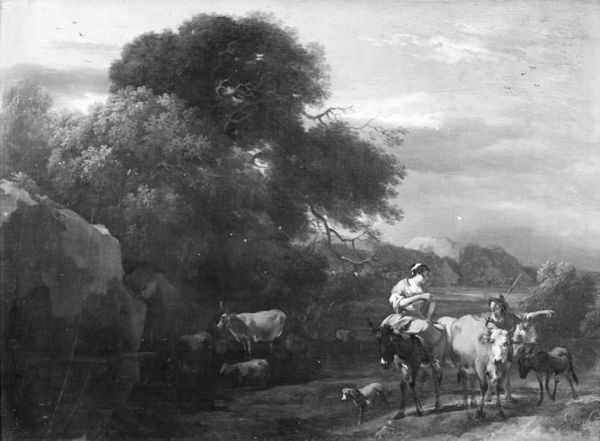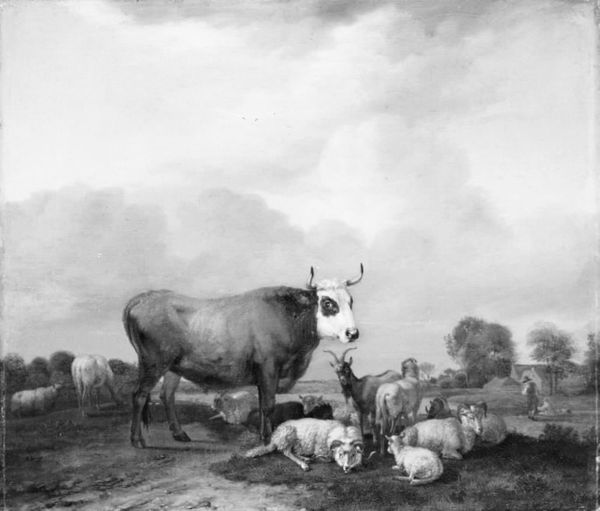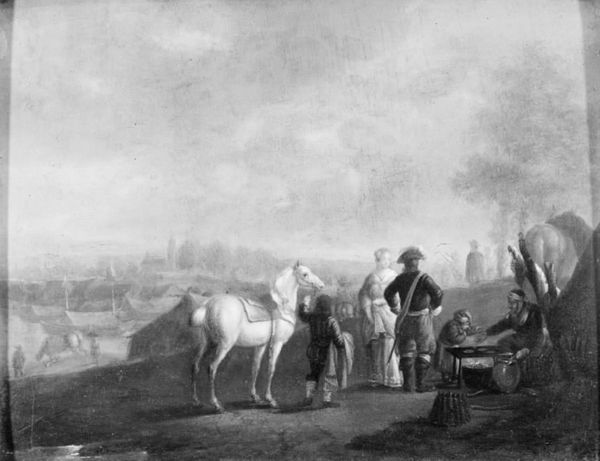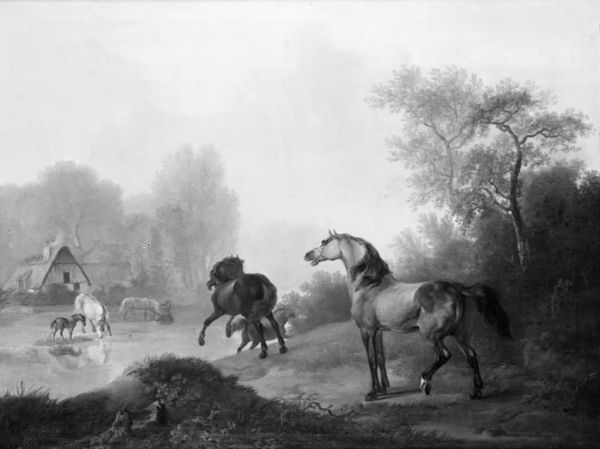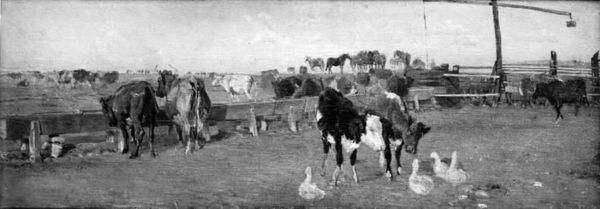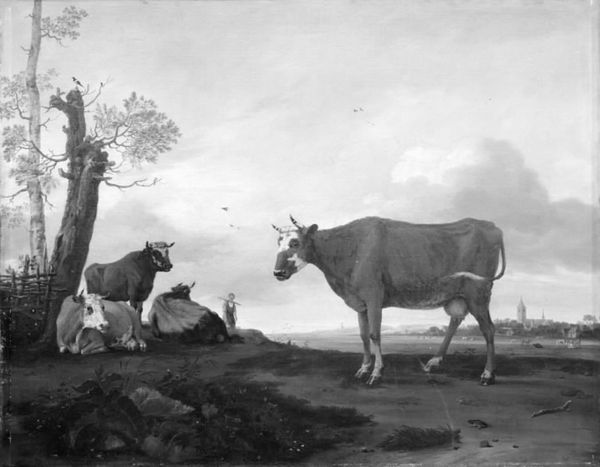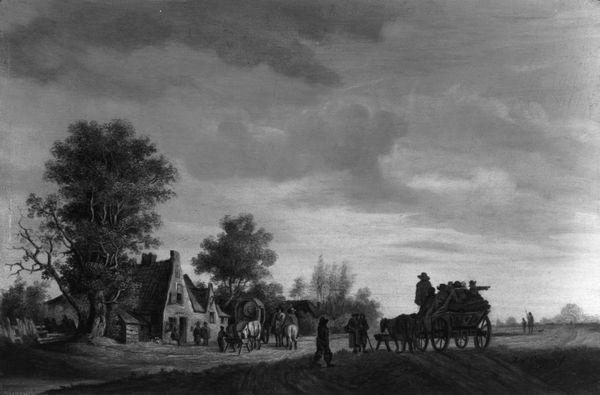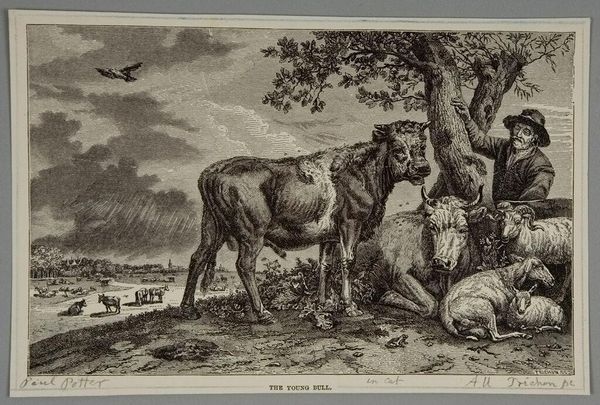
painting, canvas
#
dutch-golden-age
#
painting
#
landscape
#
canvas
#
genre-painting
#
monochrome
#
realism
#
monochrome
Dimensions: 90 cm (height) x 109 cm (width) (Netto)
Curator: "Milking Scene," created by Jan Victors sometime between 1635 and 1676, is a striking example of Dutch Golden Age painting, currently residing here at the Statens Museum for Kunst. It's rendered on canvas, using oil. What’s your first take on it? Editor: It's... muted. A monochrome pastoral scene, isn’t it? I immediately focus on the people near the canal with the milk pail, but the rest of the composition, with the cows, feels very quiet and calm. Curator: Interesting. For me, it speaks to the relationship between agrarian labor and the growing market economy of the time. Note the specifics in how Victors renders the clothing. The way he painted this scene tells us a great deal about labor practices in Dutch society, it's about how material resources were extracted and turned into commodities. Consider that milk being carefully transported; it is for trade. Editor: So, you see it through a lens of labor history and the creation of the mercantile economy, fascinating. I tend to look at paintings like this within a broader social context: who was commissioning these kinds of works, and what was their purpose in society? Genre scenes like these reflect a growing sense of national identity and pride. Who would hang this, and what does it tell their neighbors? It romanticizes country life even as they lived in busy urban canals. Curator: It goes even further than romance, the painter emphasizes specific labor skills—consider how the act of milking is detailed. This tells us about Victors’ emphasis on specific processes, which brings prestige to laborers, raising it above simple craft to something notable. We should also notice what isn't shown; we lack any machinery of industrial change which alters the perspective further. Editor: Right. And by hanging these pictures, rising merchant families displayed not just their wealth but also their connection, real or imagined, to the idealized virtues of rural life. It’s also part of the Dutch artistic tradition – realism, but also constructing images. It reminds the elite that their material goods came from actual people, which is itself political and cultural, a feedback between patron and peasant. Curator: I find your analysis perfectly aligned to modern questions of power and how imagery interacts within society. Editor: As does your assessment of the process itself! What seems like a simple country image yields deep insights into 17th century labor and markets, while at the same time providing an evolving political narrative within this community.
Comments
No comments
Be the first to comment and join the conversation on the ultimate creative platform.
